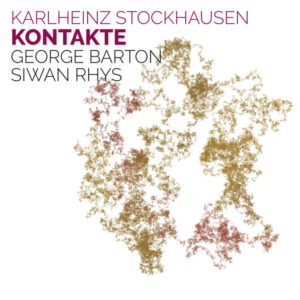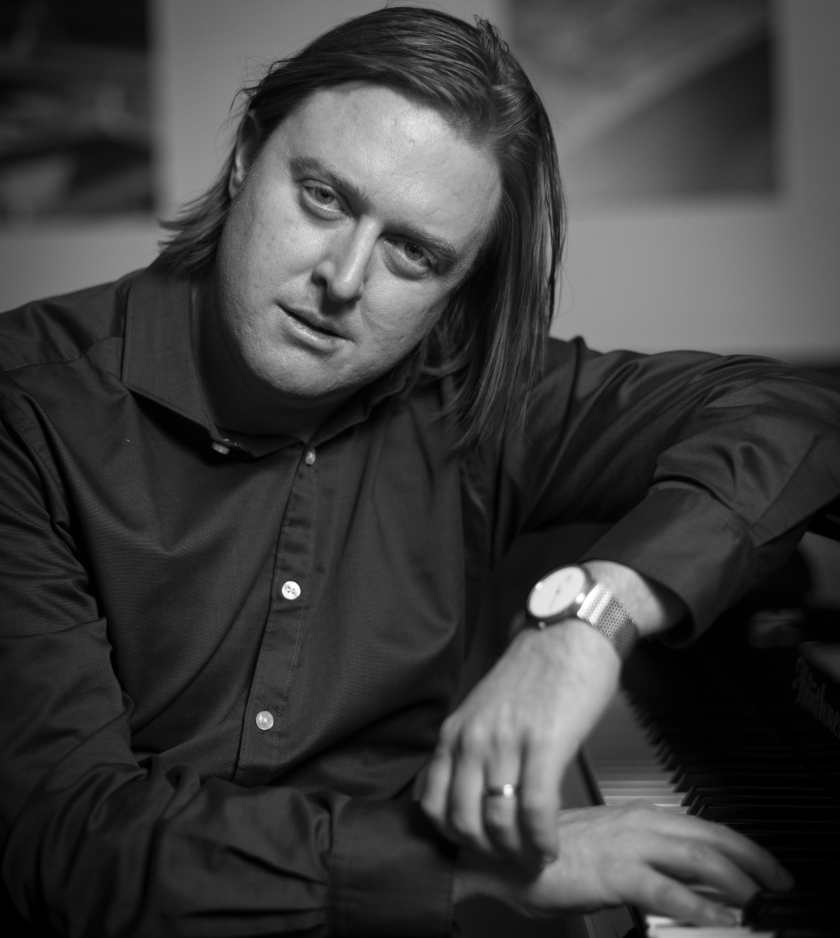Interview with Siwan Rhys and George Barton: Kontakte by Karlheinz Stockhausen

Introduction
LCSP Coach Siwan Rhys and George Barton form the percussion and piano duo GBSR. They recently discussed their recording of KONTAKTE by Karlheinz Stockhausen with Tom Donald. This was the first piece the duo performed together back in 2013.
The album is set to be released on 15 October 2019 on the ‘All That Dust’ label, an independent label producing high-quality contemporary music.
Q1: What Influence Has Karlheinz Stockhausen Had on You?
Tom Donald: First, Siwan and George, congratulations on recording such a landmark composition. My first question is: what influence has Karlheinz Stockhausen had on you, and why did you choose to record this piece?
Siwan and George: Thank you! KONTAKTE is hugely significant for us, being a key work in the piano and percussion duo repertoire. It was the first piece we performed together in 2013, and we’ve revisited it several times, adding more detail to our interpretation with each performance.
We memorised the work in 2017 after deep study. We felt connected to KONTAKTE and wanted to record it. In 2018, All That Dust launched, and we were intrigued by their binaural releases. We thought KONTAKTE would fit perfectly in their catalog, and they agreed.
Q2: How Would You Explain Stockhausen’s Music to a General Audience?
Tom Donald: How would you explain Stockhausen’s music to an everyday listener? Is a deep knowledge of music required to enjoy it?
Siwan and George: A detailed understanding isn’t necessary, but some historical context helps. After WWII, Stockhausen aimed to create a new musical language, one that wasn’t tied to the horrors of the past. He used new technologies to explore connections between pitch, rhythm, and timbre. His music combines electronic and live sounds, creating ‘contacts’ between these elements.
Enjoying Stockhausen’s music comes from experiencing the sound combinations, intensity, and musical narratives rather than understanding structural complexities. Listeners shouldn’t approach it expecting traditional forms like in Beethoven or Brahms.
Q3: Why Should People Care About Experimental Music?
Tom Donald: Contemporary classical music can provoke strong reactions. Why should people care about experimental music, and what can they gain from listening to this piece?
Siwan and George: Nobody ‘should’ care about any music. We simply find KONTAKTE to be beautiful and exciting. People might dismiss this type of music without listening with an open mind. KONTAKTE is accessible because of its sensual experience and intensity, but it challenges listeners used to traditional forms like pop, rock, or classical.
Q4: How Do You Practice Such a Complex Piece?
Tom Donald: This piece has an incredibly complex score. How do you approach practicing such a challenging composition?
Siwan and George: The key is to internalise what the electronic sounds are doing, as they act like a third band member. Stockhausen’s notation is both systematic and impressionistic, helping us synchronise our playing with the electronic parts. The more we studied KONTAKTE, the more detail we found in its construction, adjusting our timing and interpretation accordingly.
Q5: What is Binaural Sound and Its Benefits?
Tom Donald: This album was recorded in binaural sound. What is binaural sound, and what are its benefits?
Siwan and George: Binaural recordings are engineered specifically for headphone listening, simulating how human hearing works. Despite using only two channels, it creates a three-dimensional effect. In KONTAKTE, this method was particularly fitting, as the piece was conceived with surround sound in mind.
Q6: Ideal Listening Environment for Kontakte
Tom Donald: What is the ideal environment for listening to this album?
Siwan and George: Headphones are essential for experiencing the full effects of the binaural recording. High-quality headphones enhance the experience, but we wouldn’t dictate the environment. Whether sitting quietly or multitasking, the music’s detail will reveal itself.
Q7: Changes in Interpretation Over Time
Tom Donald: This is a rarely recorded work. Have there been any changes in the way the score has been interpreted over time?
Siwan and George: The score is specific, so there hasn’t been much room for varying interpretations. However, the technology available now allows us to synchronise more precisely with the tape, offering a level of accuracy that may not have been possible in earlier recordings.
Q8: New Features in Your Recording
Tom Donald: What sets your recording apart from historical interpretations of the piece?
Siwan and George: We hope our recording captures a new level of accuracy and detail, highlighting previously unnoticed connections between the tape and instruments. The binaural sound also brings a fresh dimension to the piece.
Q9: What Would Stockhausen Do Differently Today?
Tom Donald: With advances in technology, what do you think Stockhausen would have done differently if he were composing KONTAKTE today?
Siwan and George: Stockhausen’s music evolved significantly after KONTAKTE, incorporating more theatrical and electronic elements. However, we don’t think he would change KONTAKTE. The technology available at the time gave the music an intensity that still resonates today.
Q10: Where Did You Record the Piece?
Tom Donald: Where did you record KONTAKTE, and how does recording differ from live performance?
Siwan and George: We recorded it at Saffron Hall in Saffron Walden. The recording was nerve-wracking due to the pressure of documenting such an iconic work, but with an excellent producer and engineer, the process became enjoyable.
Q11: Where Can We Buy the Album?
Siwan and George: The album will be available for download from the All that dust Bandcamp Page as well as on major platforms such as iTunes, Spotify, and Google Play starting 15 October 2019. Be sure to listen with headphones!
